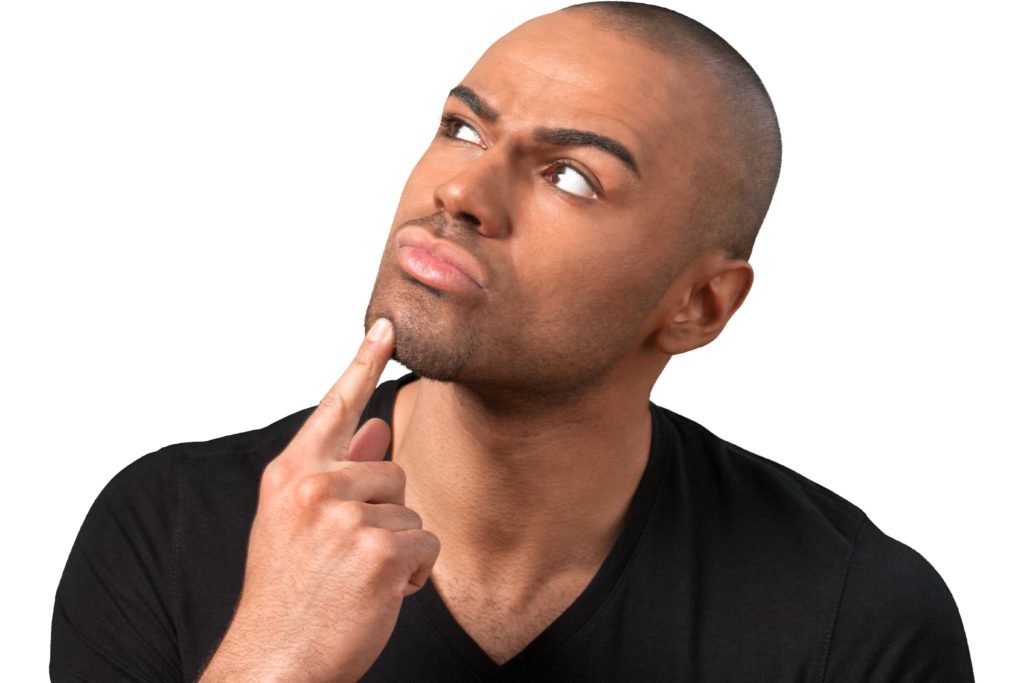Weight Distribution Tips for Truckers
Being a trucker is no easy task. It requires dedication, skill, and a deep understanding of the intricacies of the job. To help you cope with the amount of work you have to do as a trucker, check out our list of apps that can surely help you in your trucking journey!
One crucial aspect that every trucker must master is weight distribution. Properly distributing the weight in your truck not only ensures your safety on the road but also helps you comply with legal regulations and avoid unnecessary penalties.
Weight distribution refers to how the load is distributed within a truck, considering factors such as axle placement, cargo loading strategies, and dynamic adjustments during travel. Understanding these concepts is essential for every trucker to maintain control over their vehicle and prevent accidents.
Legal regulations play a significant role in weight distribution for truckers. Each state has specific laws regarding maximum allowable weights for different types of vehicles and configurations.
Furthermore, there are federal regulations set by agencies like the Federal Motor Carrier Safety Administration (FMCSA) that ensure trucks are not overloaded beyond their capacity. To comply with these regulations, it’s vital to understand how axle placement affects weight distribution.
Axles are designed to bear specific loads, and placing too much weight on one axle can lead to excessive wear and tear or even structural damage. By distributing the load evenly across multiple axles, you can ensure proper weight distribution throughout your truck.
Calculating Gross Vehicle Weight (GVW) is another essential step in achieving optimal weight distribution. GVW refers to the total weight of your loaded vehicle, including cargo, passengers, fuel, and any other equipment on board.
Knowing your GVW helps you determine if you’re within legal limits and enables you to make necessary adjustments before hitting the road. Stay tuned for more detailed information on cargo loading strategies that will help you achieve proper weight distribution in your truck while maximizing efficiency and safety!
Understanding Weight Distribution

Understanding Weight Distribution In the world of trucking, weight distribution plays a crucial role in ensuring both safety and efficiency on the road.
But what exactly is weight distribution? Well, it refers to how the weight of a truck and its cargo is spread out across its various axles.
Having the right balance ensures that tires are not overloaded, improves stability during turns, and prevents excessive wear and tear on different components of the vehicle. When it comes to weight distribution, there are a few key terms you should be familiar with.
First up, we have Gross Vehicle Weight (GVW), which refers to the total weight of a truck together with its payload – that includes both cargo and passengers. Then there’s Axle Weight, which is simply the amount of weight supported by each axle.
And lastly, we have Gross Vehicle Axle Weight Rating (GAWR), which represents the maximum allowable weight that an axle can carry. Why does all this matter?
Well, let’s say you have too much weight on one axle compared to another. This can lead to increased tire wear on one side or even overheating of certain parts due to excessive strain.
On top of that, improper weight distribution can negatively impact your ability to steer and brake effectively. So as you can see, understanding how weight is distributed across your truck is essential for safe and efficient driving.
Now that we’ve covered some basic concepts regarding weight distribution in trucking, let’s delve into the legal regulations and compliance requirements surrounding this topic. It’s important for truckers to be aware of these rules in order to avoid potential fines or penalties down the line.
Legal Regulations and Compliance

Ensuring proper weight distribution is not just a matter of practicality; it is also a legal requirement that truckers must adhere to. Each jurisdiction may have different regulations regarding weight limits for trucks.
These regulations are in place for several reasons, including maintaining the structural integrity of the roads, protecting other motorists’ safety, and preventing damage to infrastructure. One crucial aspect of compliance with weight regulations is understanding the concept of maximum allowable weight limits.
These limits are typically determined based on axle configurations, specific types of roads, and environmental conditions. For example, some jurisdictions may have lower weight limits during adverse weather conditions or on certain bridges with weight restrictions.
It’s essential for truckers to be aware of these limitations and adjust their load accordingly to avoid any legal issues. Truck drivers should also be familiar with weigh stations along their routes as they play a significant role in enforcing weight regulations.
Weigh stations are facilities located strategically on highways where commercial vehicles are required to stop and undergo weighing procedures. These stations help authorities ensure that trucks comply with weight restrictions and help maintain road safety standards.
To comply with legal requirements, truckers must keep accurate records of their vehicle’s weight distribution. This includes documenting the weights on each axle group as well as the overall gross vehicle weight (GVW).
Many jurisdictions require carrying documents such as weigh station receipts or manifests that provide evidence of compliance during inspections or when crossing state lines. Understanding legal regulations and compliance related to truck weight distribution is vital for every professional trucker.
Complying with these rules not only ensures road safety but also helps avoid hefty fines and penalties that can significantly impact both individual drivers and transportation companies alike. By being knowledgeable about local laws, adhering to maximum allowable weights, regularly monitoring loads at weigh stations, and maintaining accurate documentation, truckers can navigate their journeys smoothly while staying within the boundaries defined by legislation
The Role of Axle Placement
When it comes to weight distribution in trucks, one crucial aspect to consider is the placement of axles. The positioning of the axles plays a significant role in maintaining stability and ensuring that the weight of the cargo is properly distributed.
Let’s delve into this topic and explore how axle placement affects the overall weight balance. First and foremost, let’s talk about the standard axle configurations commonly used in trucks.
Most trucks are equipped with either a single drive axle or multiple drive axles. The position of these axles can vary depending on factors such as vehicle size, load capacity, and local regulations.
However, one thing remains constant: proper weight distribution is essential for safe and efficient transportation. One key factor that determines axle placement is the distance between them known as “wheelbase.” The wheelbase has a significant impact on weight distribution as it influences both vehicle stability and maneuverability.
Generally, a longer wheelbase allows for better weight distribution by spreading out the load over a larger surface area. On the other hand, a shorter wheelbase provides increased maneuverability but may result in concentrated weight on certain axles.
Another critical consideration regarding axle placement is axle spacing. In some jurisdictions, there are specific regulations governing minimum distances between axles to ensure proper load distribution.
These rules aim to prevent excessive stress on individual axles while ensuring an even distribution of weight across all wheels. Axle placement also affects factors such as tire wear and fuel efficiency.
When the weight isn’t evenly distributed across all wheels, certain tires may bear more pressure than others, leading to uneven tread wear or even blowouts during extended journeys. Additionally, improper axle alignment can increase rolling resistance, which negatively impacts fuel consumption.
To conclude, understanding how axle placement affects weight distribution is vital for truckers aiming for optimal performance and safety on the road. By adhering to regulations, considering wheelbase and spacing requirements, truckers can ensure that the weight is evenly distributed, reducing the risk of accidents and equipment damage while maximizing efficiency and longevity.
Calculating Gross Vehicle Weight (GVW)
Calculating Gross Vehicle Weight (GVW) When it comes to weight distribution for truckers, understanding the concept of Gross Vehicle Weight (GVW) is paramount. GVW refers to the total weight of a fully loaded truck, including the vehicle itself, fuel, cargo, and any passengers or additional equipment.
Calculating the GVW is essential in ensuring that your truck remains within legal limits and operates safely on the road. To calculate your GVW accurately, you need to know two crucial weights: the vehicle’s curb weight and its payload capacity.
The curb weight is the truck’s weight when it is empty and has no cargo or passengers on board. It includes essentials like fuel, oil, coolant, and other fluids necessary for operation.
The payload capacity refers to the maximum weight that a truck can carry safely without exceeding recommended limits. Start by finding your vehicle’s curb weight in the owner’s manual or on a plate located near the driver’s side door.
Next, determine your payload capacity by referring to your truck’s specifications provided by the manufacturer or consulting with a professional weigh station. Once you have these figures handy, calculating GVW becomes relatively straightforward.
To calculate GVW accurately for each trip, add together the curb weight and estimated cargo weight before hitting the road. Remember that cargo weights may vary depending on what you are transporting; therefore it is crucial to regularly update this information.
By consistently monitoring and calculating GVW correctly, you can ensure complete compliance with legal regulations regarding overloading while maintaining optimal safety on every journey. In addition to understanding how to calculate GVW properly, it is essential for truckers to be aware of specific legal limits imposed by regulatory authorities.
These limits vary from country to country and regionally within countries as well. Exceeding these limits can result in hefty fines or even more severe consequences such as license suspension or vehicle impoundment.
Therefore, always familiarize yourself with local regulations regarding GVW limits and penalties associated with non-compliance. By doing so, you can ensure that your truck remains within the legal limits during every trip, keeping yourself and others safe on the road.
Cargo Loading Strategies

1. Organize and Secure Your Cargo:
When it comes to cargo loading, organization is key. Before you start loading your truck, make sure you have a clear plan in mind.
Group similar items together and stack them in an orderly manner. This will not only maximize the use of space but also make it easier to access specific items when needed.
Additionally, don’t forget about securing your cargo properly. Use tie-down straps or ropes to prevent any shifting or movement during transit. When loading smaller items, consider using bins or containers to keep them contained and reduce the risk of damage.
2. Distribute Weight Evenly: Achieving proper weight distribution is crucial for maintaining stability on the road. The general rule of thumb is to place heavier items towards the front and center of the truck bed while distributing lighter items towards the back and sides. This helps maintain balance and prevents excessive stress on certain axles. Avoid overloading one side of your truck as this can lead to uneven weight distribution, which affects handling and can increase the risk of accidents. If you have an uneven load, try redistributing it or adding counterweights on the opposite side to balance things out.
3. Consider Vertical Load Distribution: While most of us focus on distributing weight horizontally, we often neglect vertical load distribution – how high or low your cargo is stacked within the trailer or truck bed plays a vital role in stability as well. Try to keep your center of gravity as low as possible by placing heavier items at the bottom and stacking lighter ones on top. This lowers the risk of tipping over during sharp turns or emergency maneuvers. Furthermore, be mindful that overloading a vehicle can result in poor braking performance due to increased momentum when stopping abruptly – so always adhere to legal limits for both horizontal and vertical payloads.
By employing these cargo loading strategies, you’ll not only enhance safety but also optimize fuel efficiency by reducing wind resistance while ensuring that your cargo arrives intact and undamaged. Remember, a well-organized, evenly distributed load is the foundation of a successful trucking journey.
Dynamic Adjustments on the Road
Once you hit the road as a trucker, your journey doesn’t just end with loading your cargo and setting off. It’s important to understand that weight distribution is not a one-time affair but an ongoing process that requires dynamic adjustments while on the road. Here are some tips to help you maintain proper weight distribution throughout your journey.
First and foremost, always keep an eye on the scale. Yes, those weigh stations exist for a reason! Make it a habit to stop at weigh stations and check your weight periodically. This will help you identify any imbalances or overloads that might have occurred during transit.
By doing this, you can catch any potential issues early on and make necessary adjustments before they become major problems down the line. Another crucial aspect of dynamic weight adjustment is redistributing your load during rest stops or at designated locations along your route.
A common scenario is when certain types of cargo settle or shift during transportation, leading to imbalanced weight distribution. Take advantage of these stops to inspect and reposition items if needed.
Distributing the load more evenly across the trailer will help maintain stability and control throughout the journey. When faced with adverse weather conditions such as heavy rain or strong winds, it’s important to adapt your driving technique accordingly.
These factors can significantly impact the stability of your truck due to their effect on its aerodynamics. In such situations, reducing speed and maintaining a firm grip on the steering wheel is key to ensuring control over your vehicle’s weight distribution.
Remember, proper weight distribution isn’t just about adhering to regulations – it plays a critical role in ensuring safety for both yourself and other road users. By practicing dynamic adjustments while on the road, you’ll be better equipped to handle unexpected challenges that may arise during transit.
So, next time you embark on a long-haul journey as a trucker, keep in mind these tips for dynamic weight adjustments: regularly check your weight at weigh stations; redistribute your load during rest stops; and adapt your driving technique in adverse weather conditions. By doing so, you’ll be on the path to maintaining a well-balanced and safe journey.
Importance of Regular Maintenance

Regular maintenance is a crucial aspect of ensuring optimal weight distribution for truckers. Neglecting regular maintenance can lead to unexpected problems that may not only affect the balance of the load but also compromise the overall safety and performance of the vehicle.
One key area to focus on during regular maintenance is checking tire pressure. Properly inflated tires are essential for maintaining optimal weight distribution.
When tires are underinflated, it can lead to uneven weight distribution across the axles, resulting in increased wear and tear on specific areas of the tire and affecting overall stability on the road. On the other hand, overinflated tires can create a harsher ride, reducing traction and increasing the risk of accidents.
By routinely monitoring and adjusting tire pressure as needed, truckers can ensure that weight is evenly distributed across all wheels. Another important aspect of regular maintenance is inspecting suspension components.
The suspension system plays a crucial role in bearing and distributing weight effectively. Worn-out or damaged suspension components such as springs, shock absorbers, or bushings can greatly impact weight distribution by causing one side of the truck to sag or tilt unevenly.
This not only affects handling but also puts additional strain on other parts of the vehicle, leading to potential safety hazards. Furthermore, regular inspections should include checking load securement devices such as straps, chains, or binders.
These devices play a vital role in keeping cargo secure during transit while also assisting in maintaining proper weight distribution. Over time, these devices may become worn out or damaged due to extensive use or exposure to harsh weather conditions.
By routinely inspecting and replacing worn-out components as needed, truckers can ensure that their cargo remains safely secured while maintaining optimal weight distribution throughout their journey. Regular maintenance is indispensable when it comes to achieving effective weight distribution for truckers.
By prioritizing tasks such as monitoring tire pressure, inspecting suspension components regularly, and ensuring proper functioning of load securement devices, truckers can not only enhance their safety on the road but also extend the lifespan of their vehicles. Moreover, in adhering to good maintenance practices, truckers demonstrate a commitment to professionalism and a dedication to delivering cargo securely while maintaining the highest standards of weight distribution.
Technology and Tools for Weight Monitoring

One of the most significant advancements in trucking technology has been the development of tools and systems that aid in weight monitoring. These innovative solutions not only help truckers stay compliant with legal regulations but also optimize their efficiency on the road. Let’s explore some of the top technology and tools available today.
1. Onboard Weighing Systems: Gone are the days of relying solely on truck scales to measure weight. Onboard weighing systems have become increasingly popular among truckers as they provide real-time weight measurements while the vehicle is in motion.
These systems utilize sensors placed on each axle to accurately calculate the load distribution and provide instant feedback to the driver. With onboard weighing systems, truckers can avoid overloading, adjust cargo placement, and ensure proper weight distribution throughout their journey.
2. Load Cells and Pressure Sensors: Load cells are another handy tool used for weight monitoring in trucks. These devices are strategically placed between a component such as an axle or suspension system, measuring the applied force or load.
Load cells can provide precise readings, indicating if a particular axle or section is being overloaded or underutilized. Pressure sensors work similarly but rely on hydraulic pressure to measure load distribution accurately.
3. Mobile Applications: With smartphones becoming an essential part of our lives, it’s no surprise that there are numerous mobile applications designed specifically for weight monitoring in trucks.
These apps allow drivers to input various parameters like cargo type, dimensions, and loading points to calculate optimal weight distribution instantly. Some applications even use GPS data to recommend adjustments based on road conditions and terrain elevation changes.
Technology has revolutionized weight monitoring in the trucking industry by providing efficient tools such as onboard weighing systems, load cells, pressure sensors, and mobile applications. Truckers now have access to real-time data that helps them make informed decisions about load placement and adjust their driving strategies accordingly for improved safety and compliance with legal regulations.
Training and Education for Truckers
One crucial aspect of ensuring proper weight distribution for truckers is receiving adequate training and education on the subject. Truck driving is not just about sitting behind the wheel and hitting the gas; it requires a deep understanding of various technical aspects, including weight distribution.
Many trucking companies offer comprehensive training programs that cover everything from safe driving practices to maintenance procedures. These programs often include specific modules dedicated to teaching truckers about weight distribution.
During training, truckers are educated on the importance of distributing weight evenly across their vehicles. They learn about the different factors that can affect weight distribution, such as cargo placement, axle positioning, and load shifting during transit.
Trainers also emphasize the significance of adhering to legal regulations concerning maximum permissible weights for each axle group or overall gross vehicle weight (GVW). Truckers are taught practical techniques for calculating appropriate axle loads based on their cargo’s size, shape, and density.
They learn how to measure and weigh their loads accurately using scales or other equipment available at shipping yards or rest areas. Training sessions typically involve hands-on exercises where truckers get to practice loading and unloading cargo while maintaining proper weight balance.
Furthermore, education plays a crucial role in developing a trucker’s problem-solving skills when it comes to weight distribution issues on the road. They are taught how to make dynamic adjustments if they notice any imbalance during their journey.
This includes techniques like repositioning cargo or redistributing weight within the trailer using load bars or straps provided by many carriers. Comprehensive training programs ensure that truckers have the knowledge and skills necessary to navigate complex issues related to weight distribution effectively.
By providing them with a solid foundation of understanding in this area, these programs equip drivers with the tools they need to make informed decisions regarding load placement, axle positioning, and responding appropriately when faced with challenges during transit. Ultimately, ongoing education ensures that professional truckers are well-prepared to prioritize safety, comply with regulations, and maintain optimal weight distribution on the road.
Conclusion
Weight distribution is a crucial aspect of trucking that cannot be overlooked. By understanding the principles and regulations surrounding weight distribution, truckers can ensure safety on the roads while maximizing their productivity.
Compliance with legal requirements not only avoids fines but also promotes road safety for everyone involved. Proper axle placement plays a significant role in weight distribution.
By distributing the cargo evenly across axles, truckers can prevent excessive strain on certain parts of the vehicle and maintain stability while driving. Additionally, calculating the Gross Vehicle Weight (GVW) accurately provides valuable information for determining if a load is within legal limits or requires adjustments.
Cargo loading strategies should always prioritize maintaining a balanced load to avoid overweight or improperly distributed cargo. Utilizing tools such as load scales and weight distribution software can greatly assist in this process.
Furthermore, making dynamic adjustments on the road is essential to maintain optimal weight distribution throughout the journey. Regular maintenance of trucks and trailer components is vital for safe and efficient transport operations.
This includes inspecting tires, suspension systems, brakes, and other critical parts that contribute to weight distribution. By keeping equipment in good working condition, truckers can minimize risks associated with uneven weight distribution.
While navigating weight distribution challenges may seem daunting at first, there are numerous technology advancements available to support truckers in their efforts. From innovative weighing systems to real-time monitoring tools, technology has made it easier than ever to ensure proper weight management during transportation operations.
Ongoing training and education play a vital role in enhancing a trucker’s understanding of weight distribution best practices. Staying updated on industry guidelines and participating in training sessions will equip drivers with essential knowledge that promotes safe driving practices while optimizing efficiency.
In closing, by prioritizing proper weight distribution through axle placement calculations and cargo loading strategies, adhering to legal regulations while utilizing maintenance procedures and technological advancements—truckers can navigate their journeys smoothly while ensuring safety on the roads for themselves and others. With a commitment to ongoing learning and improvement, truckers can embrace the challenges of weight distribution with confidence, knowing they are making a positive impact on the industry.










